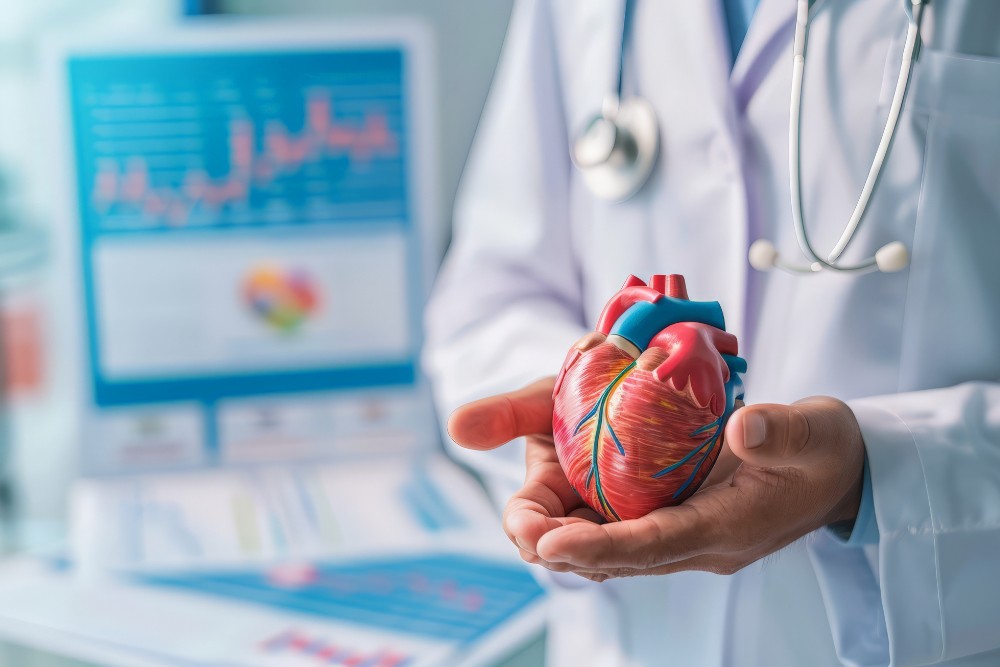cBIN1 and Its Role in Cardiovascular Health

Did you know your heart relies on tiny proteins to keep it running in top shape? cBIN1 has a critical cardiac role as an essential protein that maintains structure and therefore controls the organization of each of our cardiac muscle cells. Imagine a protein that acts as an internal architectural protein.
When that structural protein goes missing such as in the cases when the heart is being stressed, internal cellular chaos ensues, leading to reduced muscle function and heart failure.
Can giving back a single protein be responsible for reversing heart failure? The answer is, in the case of cBIN1, is yes! Heart-related health problems affect over 60 million people annually worldwide, but recent research from the University of Utah suggests restoring cBIN1 levels could reverse heart failure and transform treatment approaches.
Read on to learn how cBIN1 works and why it’s a significant focus in cardiovascular research.
An Introduction to cBIN1 and How It Relates to Cardiac Health
Think of your heart as a well-oiled machine; each beat relies on calcium to send precise signals telling your heart how hard to contract (pump) each heartbeat and how quickly to relax between each heartbeat. cBIN1 is the organizing protein that keeps the calcium-related proteins in the right place, ensuring your heart pumps blood efficiently and relaxes appropriately to keep you healthy.
When cBIN1 levels have decreased in heart muscle, as occurs after the heart is injured, heart function suffers. Calcium signals go awry, and your heart struggles to accommodate demands. If the heart is deprived of heart-pumping proteins for too long, it can lead to heart failure, affecting how other internal organs such as the lungs and kidneys function.
The Critical Link to Heart Failure
Heart failure is a gradual breakdown of the systems that keep your heart functioning, most important the function of heart muscle itself. One of the most critical factors in the breakdown is the depletion of cBIN1, the protein that maintains the structural integrity of heart cells. Heart dysfunction begins with weakened contractions and reduced blood flow, and over time, this leads to full-blown multiorgan system heart failure.
cBN1 research has consistently shown that low cBIN1 levels are a dipstick into the biochemical health of the heart. Patients with advanced stages of the condition usually exhibit a significant reduction in this protein, leading researchers to believe that cBIN1 is essential to heart health. This is confirmed by the rescue experiment- returning cBNI1 is enough to reverse heart failure.
Symptoms of heart failure include:
- Shortness of breath
- Fatigue and weakness
- Swelling in legs, ankles, feet, hands, and abdomen
- Rapid or irregular heartbeat
- Persistent cough or wheezing
- Difficulty exercising or performing daily activities
- Dizziness or lightheadedness
- Chest pain
The University of Utah’s Groundbreaking Research
Researchers at the University of Utah have made strides in finding ways to restore cBIN1 levels using gene therapies. In these studies, researchers worked with large animals that were exhibiting signs of heart failure. Gene therapy boosted cBIN1 levels, restoring cells to enhance protein production and address underlying causes of heart failure.
The gene therapy produced enough cBIN1 to improve heart function and reverse heart failure. It did more than manage symptoms. The hearts were returned to a more functional state and the rest of the organs recovered as well.
Broader Implications for Cardiovascular Health and Heart Disease Research
What could cBIN1 research mean for heart health? The potential of cBIN1 research goes beyond heart failure. Personalized treatments target the specific needs of each patient. Imagine being able to measure your cBIN1 levels and receiving tailored therapies to restore balance before symptoms appear.
This approach could also serve as a model for treating other diseases caused by cellular dysfunction, like neurodegenerative diseases (Alzheimer’s and Parkinson’s), muscular dystrophy, and autoimmune diseases where cell communication and structural integrity are compromised.
The Future of cBIN1 Research in Utah and Beyond
While cBIN1 research is promising, bringing cBIN1 therapies to humans is complex and challenging. Researchers must conduct clinical trials to ensure the treatment is safe and effective. Despite challenges, the University of Utah is making significant progress. Their work is leading the charge in understanding and employing cBIN1 to stop and reverse heart failure in humans.
The Promise of cBIN1 Therapy in Reversing Heart Failure
Your heart works tirelessly to keep you going, and cBIN1 is crucial to keeping you healthy from the inside out. When this protein is missing, the heart’s structure and function falter, leading to heart failure, which could be fatal.
Thanks to cutting-edge research at the University of Utah, there’s new hope for restoring cBIN1 levels and reversing heart damage. The approach is innovative and a game-changer for millions affected by heart disease and heart failure annually.


